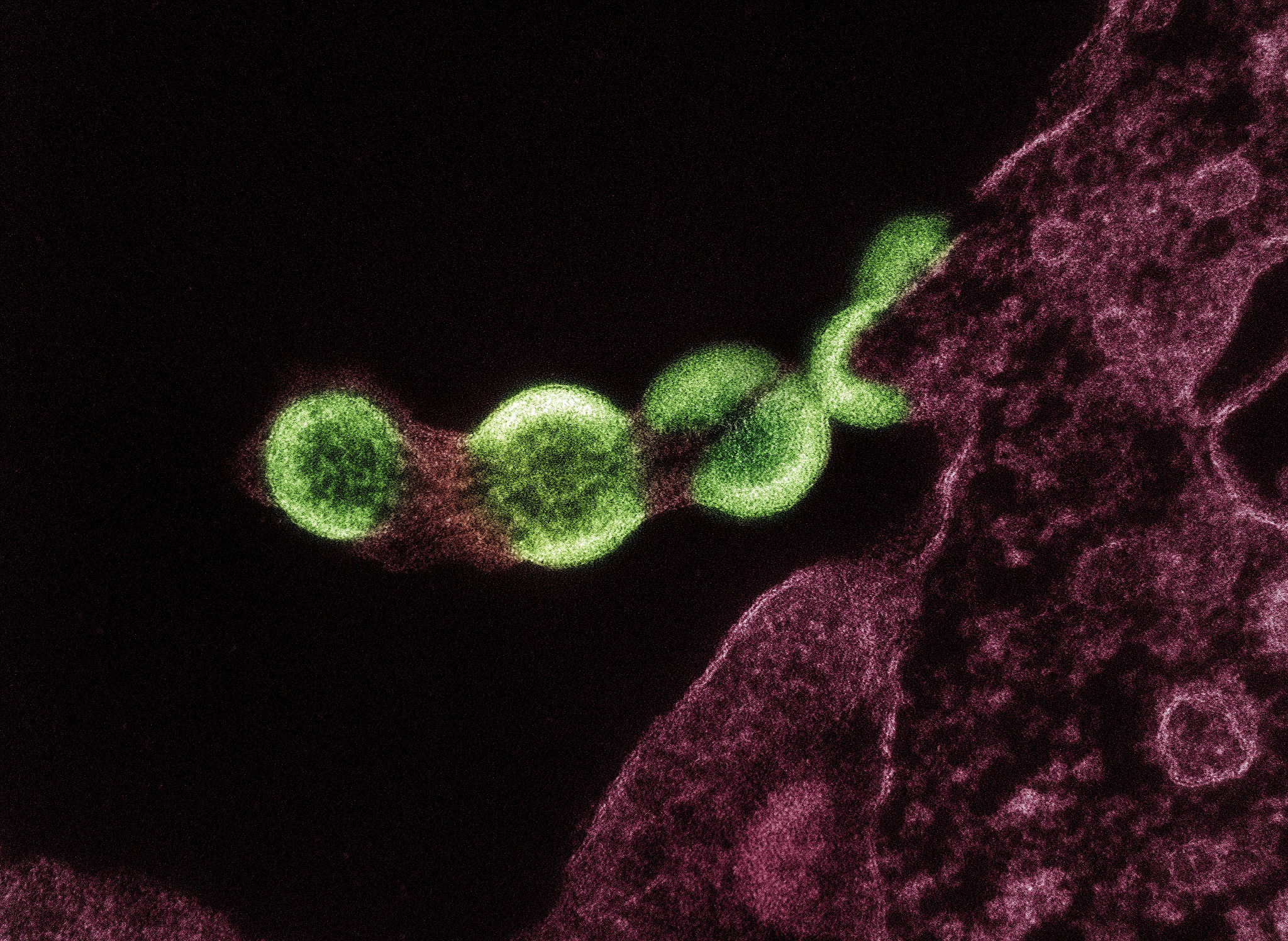Pre-exposure prophylaxis, or PrEP, is a strategy in which people routinely take one or more antiretroviral drugs to reduce their chances of getting HIV. Two PrEP methods are currently licensed in the United States: oral combinations of daily antiretrovirals in a single pill, and a long-acting injectable antiretroviral administered once every two months. In addition, a topical monthly vaginal ring containing a slow-release antiretroviral is approved for HIV prevention in Europe and several African countries. NIAID supports research to develop additional forms of PrEP, including longer acting formulations.
NIAID Studies Established PrEP Efficacy
Oral PrEP
The NIAID-supported clinical trial called iPrEx was the first to establish the effectiveness of daily oral PrEP. In 2010, this randomized controlled trial found that daily tenofovir disoproxil and emtricitabine reduced the risk of acquiring HIV among nearly 2,500 men who have sex with men. Since many study participants did not take the medication daily as prescribed, the reduction in risk for the whole study population was just 44 percent. However, those men who had detectable drug in their blood—indicating that they were taking oral PrEP regularly—had a 92 percent lower risk of acquiring HIV than participants who received a placebo.
Subsequently, three more large-scale randomized controlled trials of daily oral PrEP found that it substantially reduced the risk of acquiring HIV among people who inject drugs, heterosexual men and women, and heterosexual couples in which one partner was living with HIV and one was not. The Food and Drug Administration consequently approved the use of tenofovir disoproxil and emtricitabine, marketed as Truvada, for oral PrEP in 2012. The Centers for Disease Control and Prevention (CDC) issued comprehensive clinical guidelines in 2014 recommending that daily oral PrEP be considered for HIV prevention in people who are at substantial risk for HIV. The World Health Organization (WHO) issued a similar recommendation in 2015 after two European studies showed that PrEP was highly effective at reducing the risk of HIV in real-world settings, outside the supportive structure of a clinical trial. In 2019, the U.S. Preventive Services Task Force recommended that clinicians offer daily oral PrEP to all people at high risk of acquiring HIV.
A second daily pill for oral PrEP was approved by the FDA in 2019, using a combination of the antiretrovirals tenofovir alafenamide and emtricitabine, which is marketed as Descovy. This drug combination is not yet approved for use as oral PrEP in women.
Long-Acting Injectable PrEP
NIAID supports the development of long-acting injectable PrEP as a less frequent, more discreet alternative to daily oral pills. The NIAID-sponsored trial called HPTN 083 was the first to show that long-acting injectable PrEP with the antiretroviral cabotegravir administered once every two months was more effective than daily oral Truvada at preventing HIV acquisition among study participants. Soon after, the NIAID-sponsored HPTN 084 trial showed long-acting cabotegravir was also more effective than a daily oral PrEP at preventing HIV acquisition among women. The FDA approved the medicine as an HIV prevention option for adults and adolescents in 2021, marketed as Apretude. In 2022, the WHO recommended cabotegravir for PrEP as an additional prevention option, and additional regulatory approvals continue to follow.
Another long-acting injectable PrEP agent in development is called lenacapavir, a drug in the capsid inhibitor class of antiretrovirals that is administered every six months. Lenacapavir is already marketed for HIV treatment as Sunleca. In 2024, the manufacturer released findings from Phase 3 studies of lenacapavir for PrEP showing the drug was safe and effective. NIAID and its grantees have collaborated with industry scientists to provide instrumental evidence on the structure of HIV, contributing to the development of lenacapavir. NIAID-funded scientists continue to study the activity of lenacapavir in the body, characterize resistance to lenacapavir’s drug class, and work to develop a method for analyzing lenacapavir drug levels, among other efforts. This research will inform future drug development and clinical research. In addition, the NIH-funded HIV Prevention Trials Network is implementing two studies, HPTN 102 and 103, examining lenacapavir in women and people who inject drugs in the United States.
Topical PrEP
In 2020, the European Medicines Agency announced it had adopted a positive scientific opinion on the dapivirine vaginal ring for use by women ages 18 and older in low- and middle-income countries to reduce their risk of HIV infection. The dapivirine ring is made of flexible silicone, continuously releases the antiretroviral drug dapivirine into the vagina, and is replaced monthly by the user. It is now approved in several African countries and recommended by the WHO for HIV prevention.
NIAID, together with the Eunice Kennedy Shriver National Institute of Child Health and Human Development and the National Institute of Mental Health supported studies to examine the safety of the dapivirine ring during adolescence and pregnancy, when the risk of HIV acquisition is heightened, and during periods of breastfeeding, when transmission to infants may occur. These studies could inform next steps on potentially expanding the indication for the ring to women throughout their lives.
PrEP Methods in Development
Laboratory and animal studies are exploring new platforms for antiretroviral-based HIV prevention, including dissolvable vaginal film, rectal douche, and multipurpose technology that would pair PrEP with a contraceptive.
View a 2019 infographic on NIAID-supported research on long-acting HIV prevention.
Scientific Advances
Analysis of HIV DNA Levels in Persons Who Acquired HIV in the Setting of Long-Acting Cabotegravir for HIV Prevention
November 5, 2024An analysis of HIV Prevention Trials Network studies of long-acting injectable cabotegravir for HIV pre-exposure prophylaxis (CAB-LA PrEP) showed that some people who acquired HIV while taking CAB-LA had lower HIV DNA levels than those on tenofovir-based PrEP.



